The Taj Mahal is a highlight of unique Mughal architecture, in design and structure. In addition, it is a symbol of a great love story and bond. The story is so powerful that in December 2021, a man in India replicated the Taj Mahal into a smaller-scale home. Just like with the Taj Mahal, it was his way of showing his love for his wife.
For hundreds of years, people from all over the world have traveled to India to visit the beautiful white marble mausoleum.
Not only is it a cultural landmark in India, but it contains the story of a man and a woman. Their love and bond are the reason behind the planning and construction of the Taj Mahal. In addition, it is a testimony to the blood and sweat of the 20,000 workers and over 1,000 animals that built the monument.
Like all landmarks, it has a fascinating history, a beautiful exterior and interior, and myths that question history.
Shah Jahan and Mumtaz Mahal
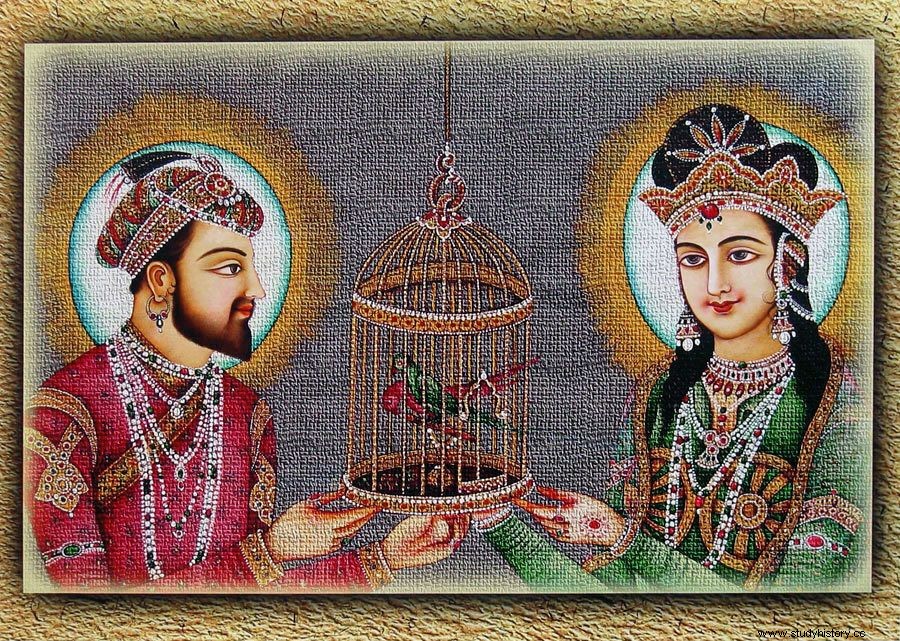
Shah Jahan was a member of the Mughal Dynasty. They ruled most of northern India between the 16th and 18th centuries. His father, Emperor Jahangir, died in 1627. This resulted in a power struggle between Shah Jahan and his brothers. Shah Jahan became the victor. He crowned himself emperor in 1628.
However, the love story begins before his father's death, when Shah Jahan was Prince Khurram.
In 1607, a sixteen-year-old Prince Khurram walked through the royal bazaar. He flirted with the daughters of high-ranking families who managed the stalls. His flirtations ceased when he met Arjuman Banu Begum. She was a fifteen-year-old woman whose father was to become prime minister, and whose aunt married Prince Khurram's father.
It was love at first sight, but they could not marry right away. Prince Khurram had already arranged to marry Kandari Begum. After marrying Kandari, Arjumand became Prince Khurram's second wife. He later took a third.
Of all the three wives, Prince Khurram loved only Arjumand. He gave her the name Mumtaz Mahal, which means "chosen one of the palace". They married March 27, 1612.
In 1628, Prince Khurram became Emperor Shah Jahan
Mumtaz was smart and kind-hearted. The audience adored her. Among all her remarkable qualities, she cared about the people of India. For example, she noticed the widows and orphans in the region to make sure they got money and food.
Mumtaz's death
In 1631, a revolt by Khan Jahan Zody began. Shah Jahan took his military from Agra to Deccan to quell the uprising. Despite being heavily pregnant, Mumtaz accompanied her husband.
In the middle of the camp, she gave birth to their daughter, their 14th child. Slowly after the birth, Mumtaz's health began to decline.
Shah Jahan was informed of his wife's condition and hurried to her side. Before her death, Mumtaz made her husband keep four promises to:-
- Build the Taj in her memory.
- Remarry.
- Show kindness to his children.
- Visit her grave on the anniversary of her death.
She died in her husband's arms one day after her daughter's birth.
Because of the feud, they buried her body according to Islamic traditions in Burbanpur.
After Shah Jahan's victory over the uprising, he requested that her body be exhumed and taken to Agra. He returned with a large procession of thousands of soldiers following Mumtaz's body, mourning along the route.
Planning the Taj Mahal
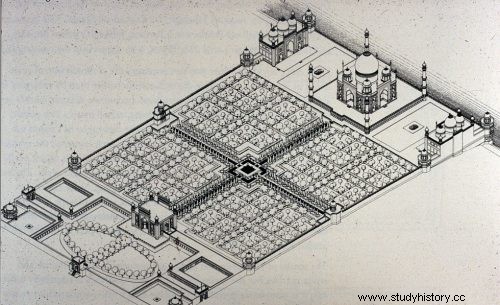
Shah Jahan was filled with grief and vented his emotions in designing the elaborate and precious monument. Moreover, the design and structure were so unique that it was the first large mausoleum dedicated to a woman.
Shah Jahan was passionate about architecture and worked directly with the plans. In addition, many of the best architects of the time provided their input and assistance.
In addition, he spared nothing. The Mughal Empire was one of the richest empires in the world during Shah Jahan's reign. The resources that built the monument were as great as the design.
It was called the 'Taj Mahal', which means 'the crown of the region', a representation of heaven on earth.
Construction began in 1632.
It involved 20,000 thousand workers from India, Persia, Europe and the Ottoman Empire. Shah Jahan wanted the mausoleum to rise quickly. He contracted both skilled and unskilled workers. In addition, he housed them in a nearby town, Mumtazbad, which was built especially for them. In addition, the construction involved stonemasons, calligraphers, embroiderers and painters. 1000 elephants and an unreported number of bulls were included.
The builders first worked with the foundations. Then on the 624 foot long shelf or base. Then the base of the Taj Mahal and the matching red stone buildings that can flank it, the mosque and the guesthouse.
Workers completed the mausoleum between 1638 and 1639. They completed the annexes in 1643. The decorations were completed in 1947.
All in all, the construction went over 22 years.
Inside the Taj Mahal
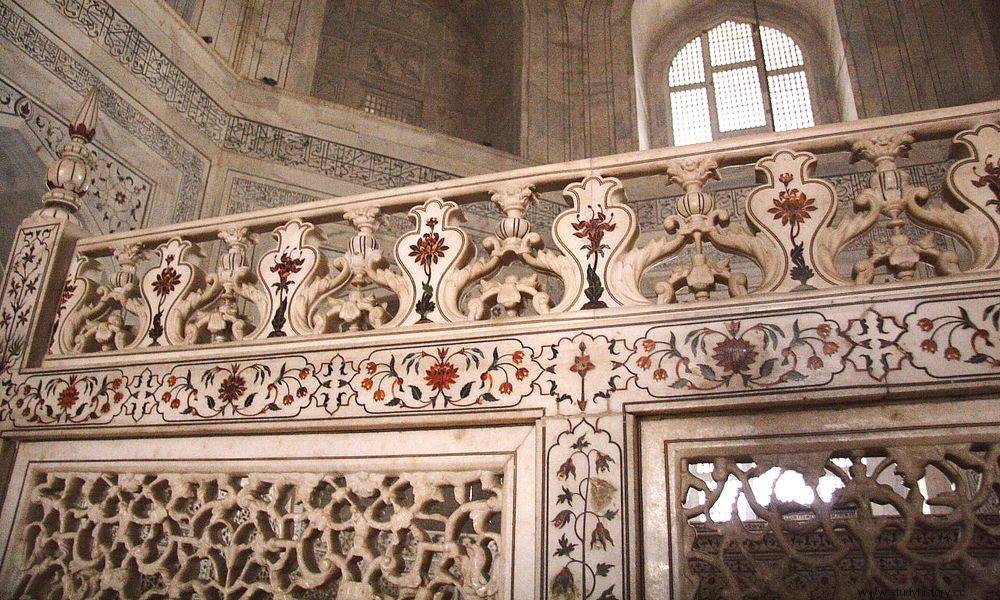
The Taj Mahal became a prominent example of Mughal architecture and design. It was a mixture of Indian, Persian and Islamic style. The design planned for the two mosques to be placed symmetrically on each side of the mausoleum.
Its architectural elements on the inside highlight the Taj Mahal as an important architectural landmark.
Materials and design
The white marble is one of the most prominent features. Brought in from Maharana, Rajasthan, it took the 1,000 elephants and bulls to drag the marble to the construction site. The 240-foot double-shell dome is covered in white marble, just like the tall, thin mosques.
The gemstones and semi-precious stones decorate the interior with Hindu and Persian decorations, such as floral designs and tessel patterns. The stones came from all over the world, such as lapis lazuli from Sri Lanka, jade from China, malachite from Russia and turquoise from Tibet.
The inlaid flowers around the dome were from a process called parchin kari . Skilled stonemasons carved the intricate floral design into the marble. Then they placed the semi-precious and precious stones to form the vines and the flowers.
Calligraphic inscriptions
At the time of the construction of the Taj Mahal, Islam forbade detailed work that incorporated figures with human characteristics. Instead, Arabic inscriptions decorated the mausoleum.
Shah Jahan hired a master calligrapher, Amanat Khan. Amanat chose the 22 passages inscribed from the Qur'an, the holy book of Islam. He was the only person allowed by Shah Jahan to sign his name on his work.
The calligraphy is made of thuluth, a calligraphic design central to Islamic artistic tradition. The finished verses are inlaid with black marble, a soft feature of the Taj Mahal that mimics real handwriting. The letter increases in size, according to the height and distance from the viewer. Columns and walls of the monuments also adorn the calligraphy.
An inscription on the sport of sandstone, known as Daybreak, invites believers to enter paradise.
Raised graves
The raised tombs are in an octagonal marble chamber that adorns carvings and semi-precious stones. The first tomb was for the Mumtaz Mahal, centered in a marble chamber. The second tomb is for Shah Jahan, west of Mumtaz's.
However, they are cenotaphs, false graves. The real tombs of Mumtaz and Shah Jahan are below the false tombs at garden level.
A delicately carved, lacy marble screen surrounds the tombs.
Originally, the screen was supposed to be golden. A marble shield replaced the gold so that thieves would not be tempted to steal it.
The Garden
According to Islam, the image of paradise is a garden. There are four rivers flowing from a central point on the mountain.
The garden of the Taj Mahal is an important feature for depicting "heaven on earth". It is located south of the mausoleum and has four sections. Four 'rivers' with water divide the four sections, which gather at a central pool. The water comes from the Yamuna River through a complex underground water system. In addition, the rivers of the Taj Mahal represent the promise of water, milk, wine and honey in paradise.
There are no records that can tell about the exact type of trees and flowers in the garden.
Myths around the Taj Mahal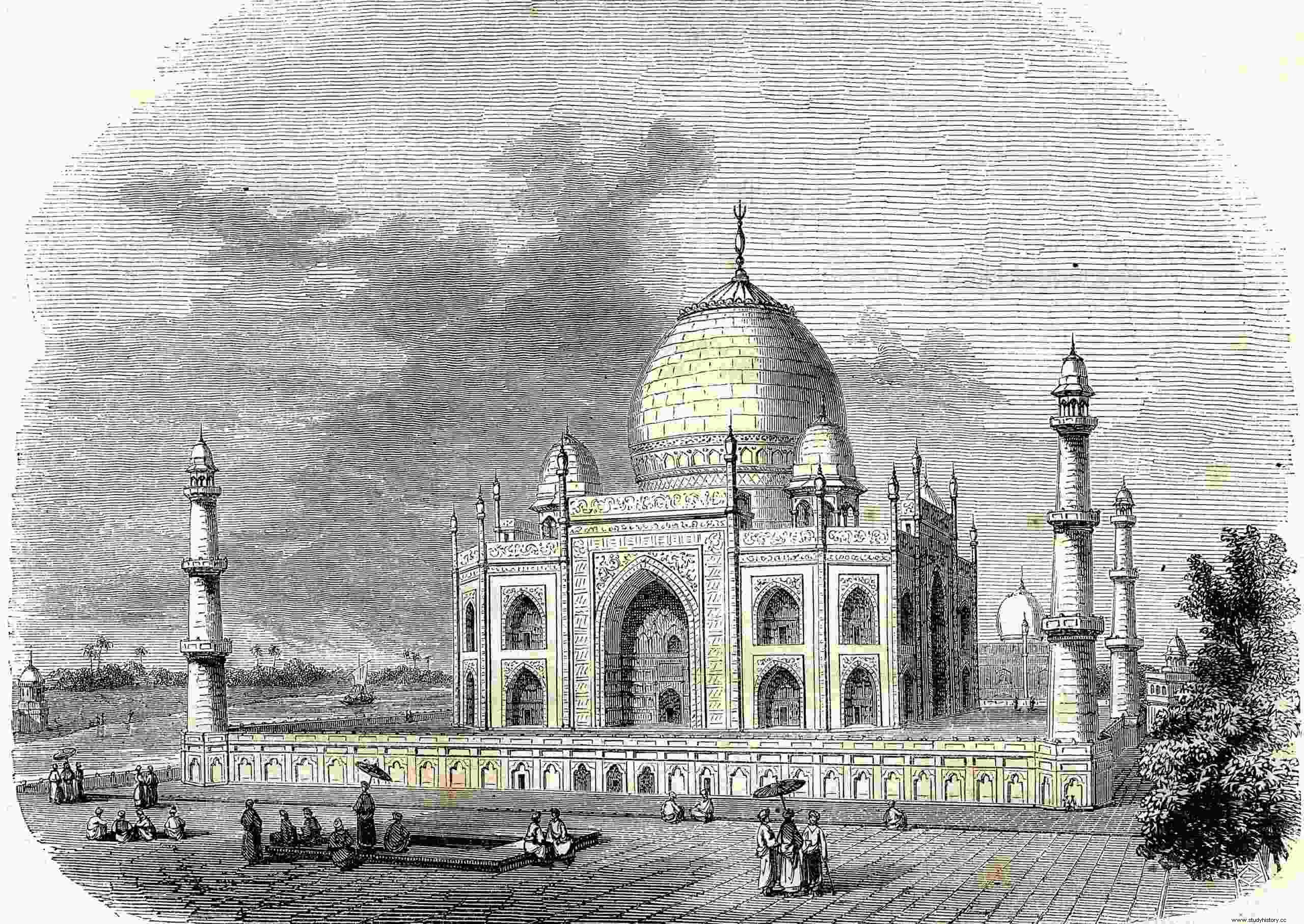
Many people know the wonders of the world, their facts, their history, and can give detailed descriptions. However, many are not aware of this myth that surrounds such wonders. One of them is the Taj Mahal. Some turned out to be easy to find the truth, while others remain a mystery.
The amputation of workers
Some report that Shah Jahan cut off his hands and stuck in the eyes of the workers, architects and craftsmen after completing the Taj Mahal. Shah Jahan wanted to make sure that no one would recreate the beauty of the Taj Mahal in structure and design.
Other stories claim that workers signed a contract to never work on a project with a similar design.
The hole in the ceiling
Above Mumtaz Mahal's tomb is a small hole in the ceiling.
Rumor has it that artisans deliberately made the hole. The reason is that they would leave the Taj Mahal with one mistake, an attempt to sabotage Shah Jahan's flawless image of the mausoleum.
Also, the plan for the hole came after workers learned of Shah Jahan's plan to amputate them after construction.
Another mausoleum
Among all the stories, one mentions that Shah Jahan planned the construction of another mausoleum. The black Taj Mahal. Ruins of black marble over one of the Taj Mahal's gardens support the stories.
But in the 1990s, excavations found that the black marble was discolored white stones.
The Taj Mahal is a Hindu temple
One of the controversies is that the Taj Majal is a Hindu temple, a Shiva temple called Tejo Mahalya . A man named PNOak made the claim. He showed the engravings on the Taj Majal that he did not believe were of Islamic origin.
This put the Indian government in a difficult situation as many want the Taj Mahal to be restored as a Hindu temple. Many people continue to believe that.
Destruction of the Taj Mahal
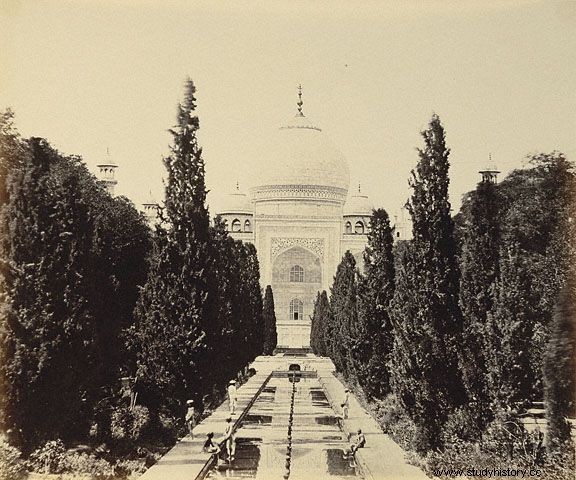
Shah Jahan was rich enough to support the Taj Mahal and its maintenance costs. But over the centuries, the Mughal Empire lost its riches. The Taj Mahal suffered neglect and decay for 200 years after Shah Jahan's death. It fell into ruins.
In the 19th century, the British overthrew Mughals and took over India. The British took apart the Taj Mahal for its beauty. They cut gems from the walls, stole silver candlesticks and doors and tried to steal the marble abroad.
Lord Curzon, the British viceroy of India, put an end to looting. He worked to restore the Taj Mahal. It was part of the colonial effort to preserve India's artistic and cultural heritage.
Recent issues
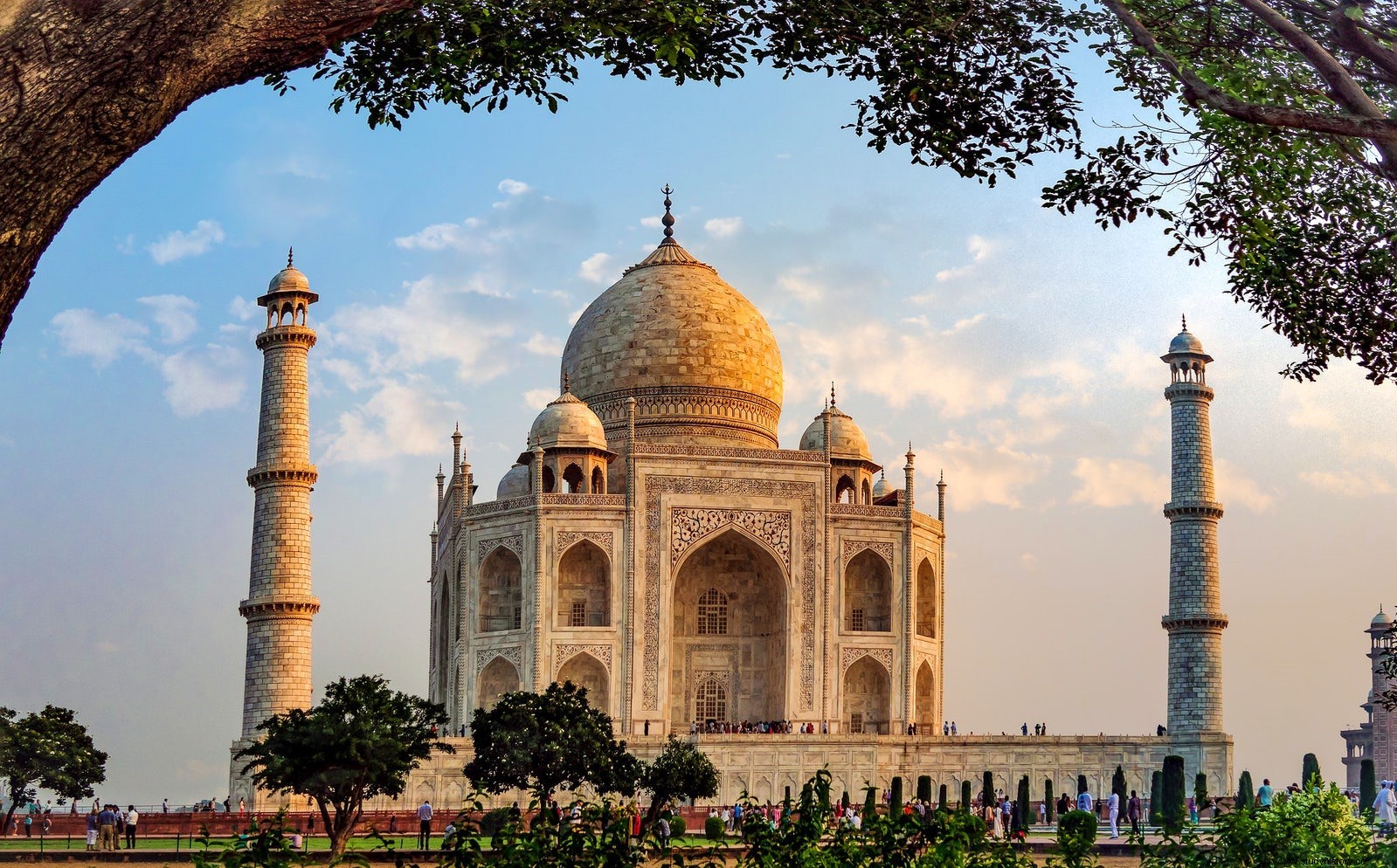
Between 1984 and 2004, the Indian government banned night viewing for fear of being attacked by Sikh militants.
Some Hindu nationalists tried to downplay the importance of Muslim influence in the Taj Mahal. They considered the origin and design of the Taj Mahal.
Air pollution from nearby factories and car traffic threatened the white marble. In 1998, India's Supreme Court imposed anti-pollution measures to prevent the deterioration of marble. It forces some factories to close. In addition, vehicle traffic was banned from surrounding areas of the Taj Mahal.
Conclusion on the Taj Mahal
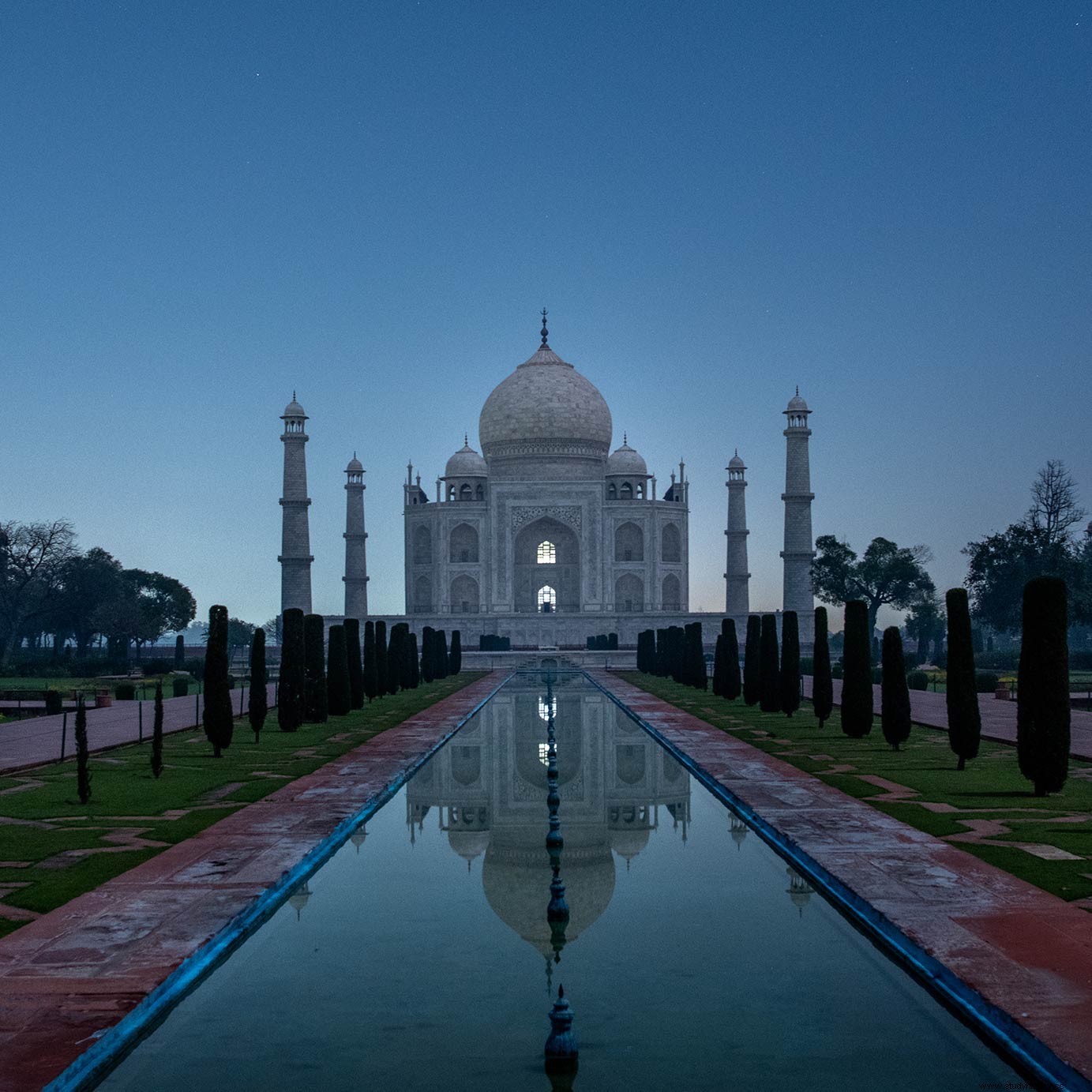
To this day, the Taj Mahal continues to be a cultural symbol of India.
The 22-year-old construction led to a magnificent architectural achievement that is visited by more than three million people a year. People visit during the day to see the white marble get different shades throughout the day, as the sun hits it at different angles. Once a month, for a short while, visitors can see how the inside of the Taj Mahal shines in the moonlight.
It contains a four hundred year old story about a bond that is so strong that it went beyond the creator. Not only does the story live on, but it embodies the hard work of 20,000 workers and over 1,000 animals that built the complex.
In addition, India made it its mission to preserve the glory of the Taj Mahal. It represents the architecture of their past, and as a result, it helps the environment. The initiatives that were taken cut carbon emissions and smog in the air.
All over the world, countries are proud of their monuments. They represent the country's history, from the Eiffel Tower in Paris, France, to the world's largest chair in St. Florian, Austria. By protecting the country's landmarks, they protect the country's identity.
The great challenge of the twenty-first century is to raise people everywhere to a decent standard of living while preserving as much of the rest of their lives as possible.
- Edward O. Wilson
